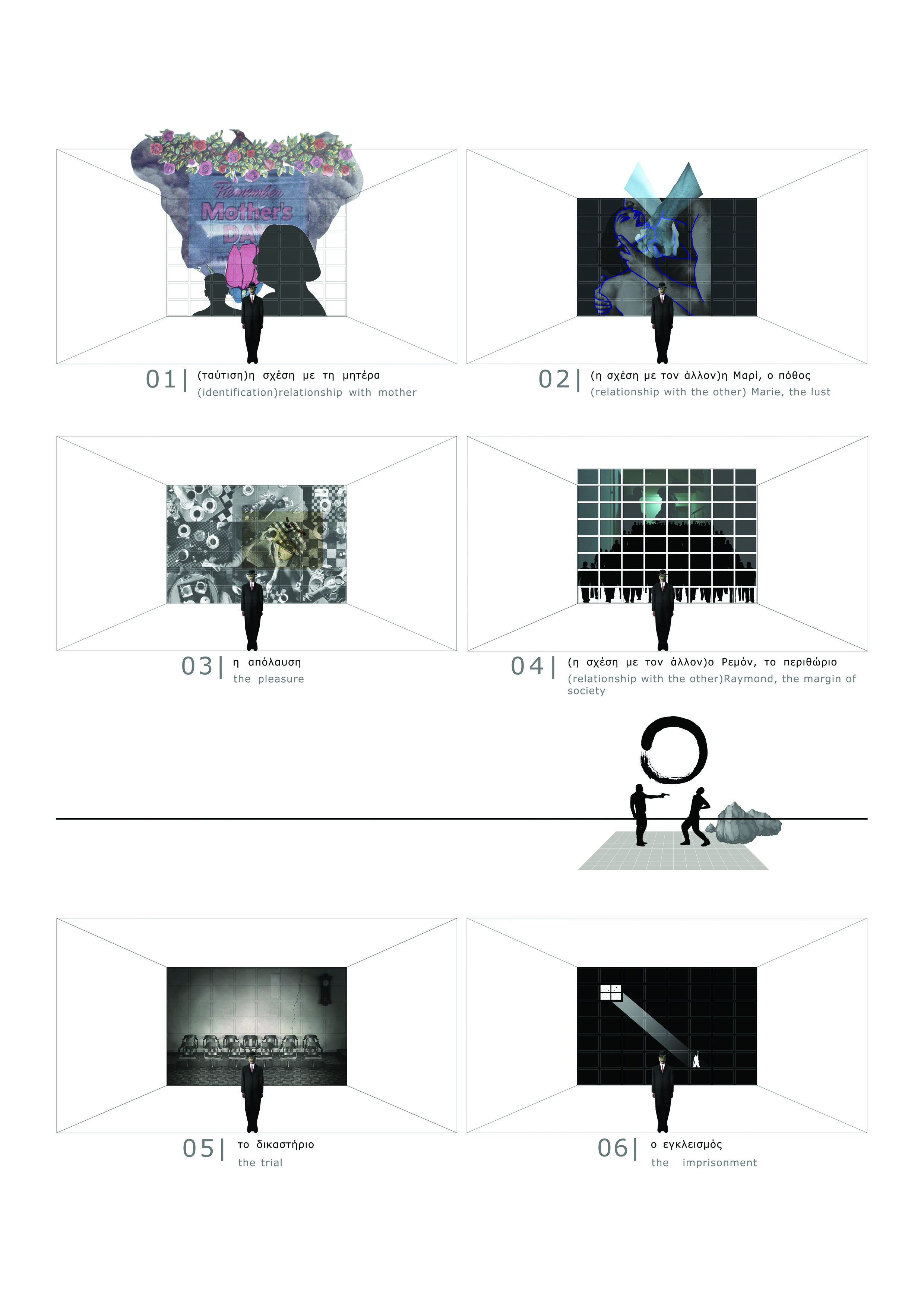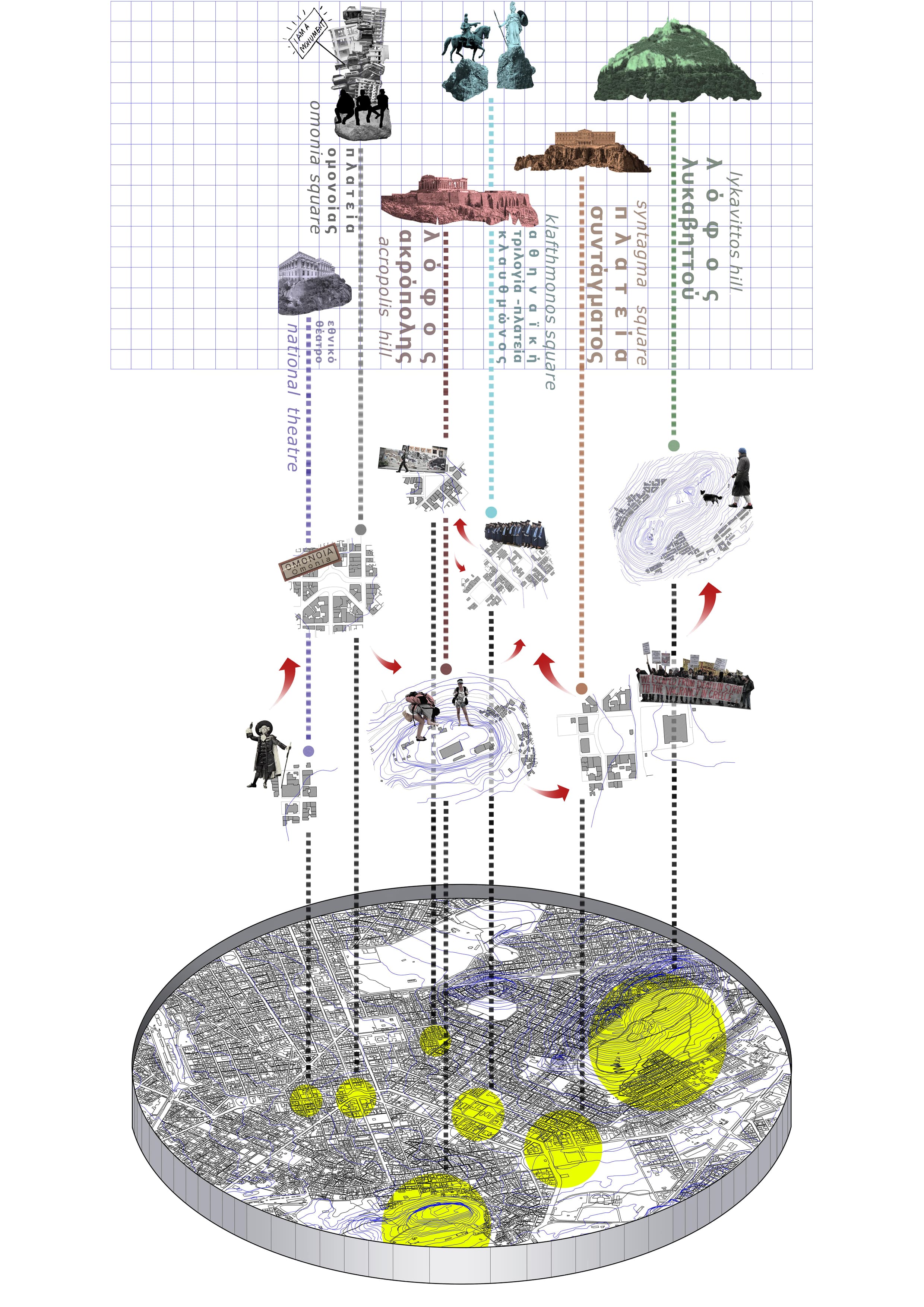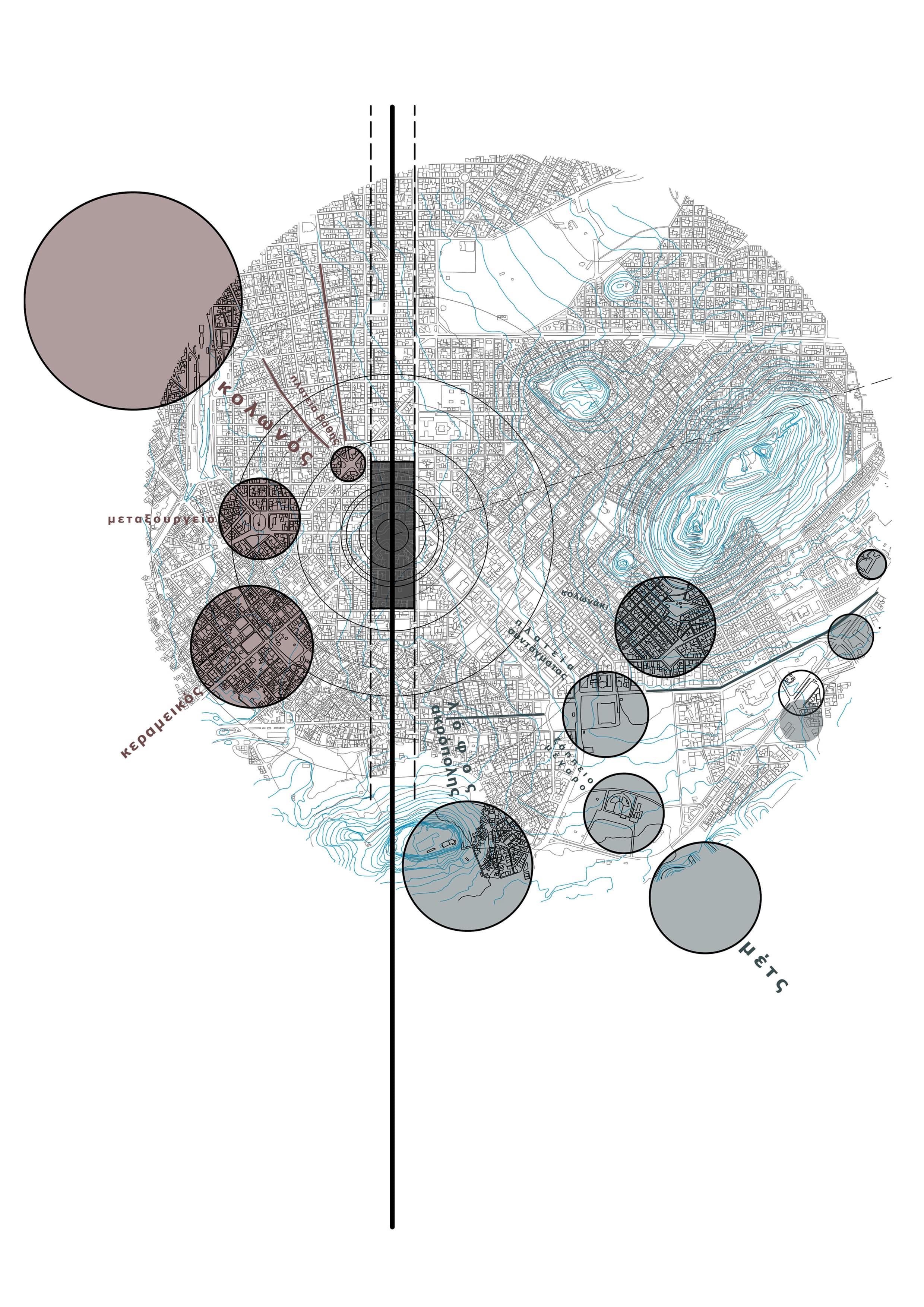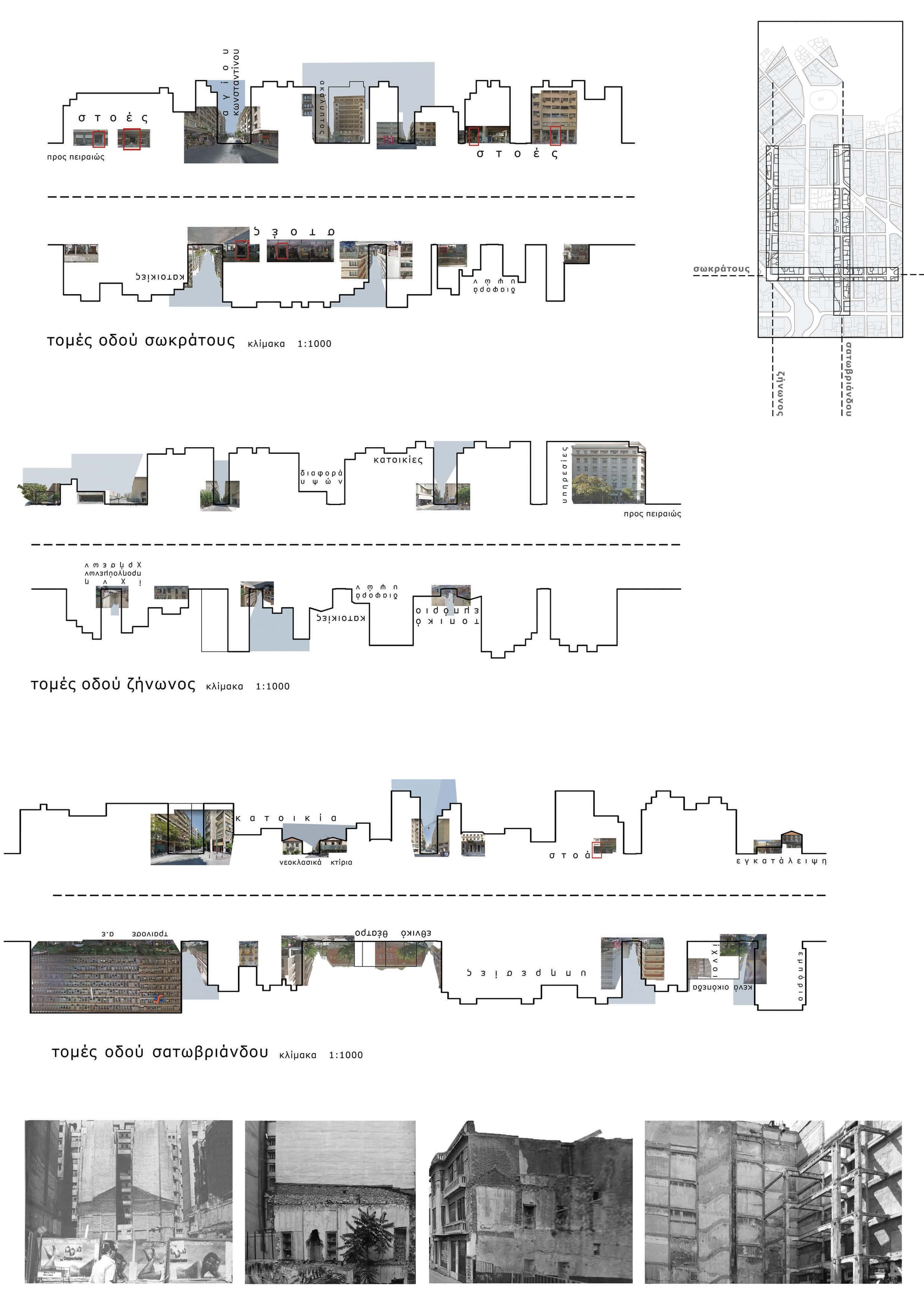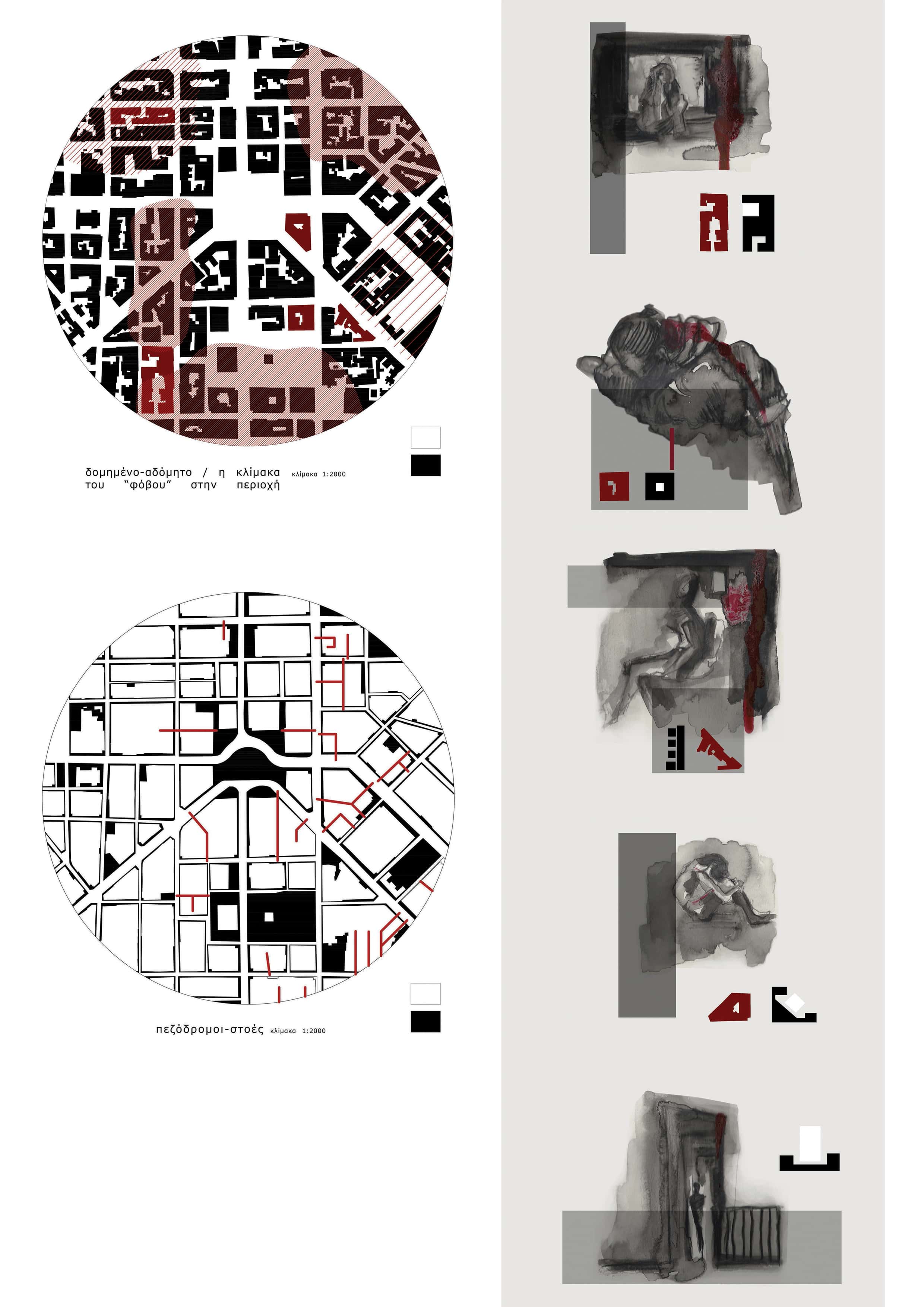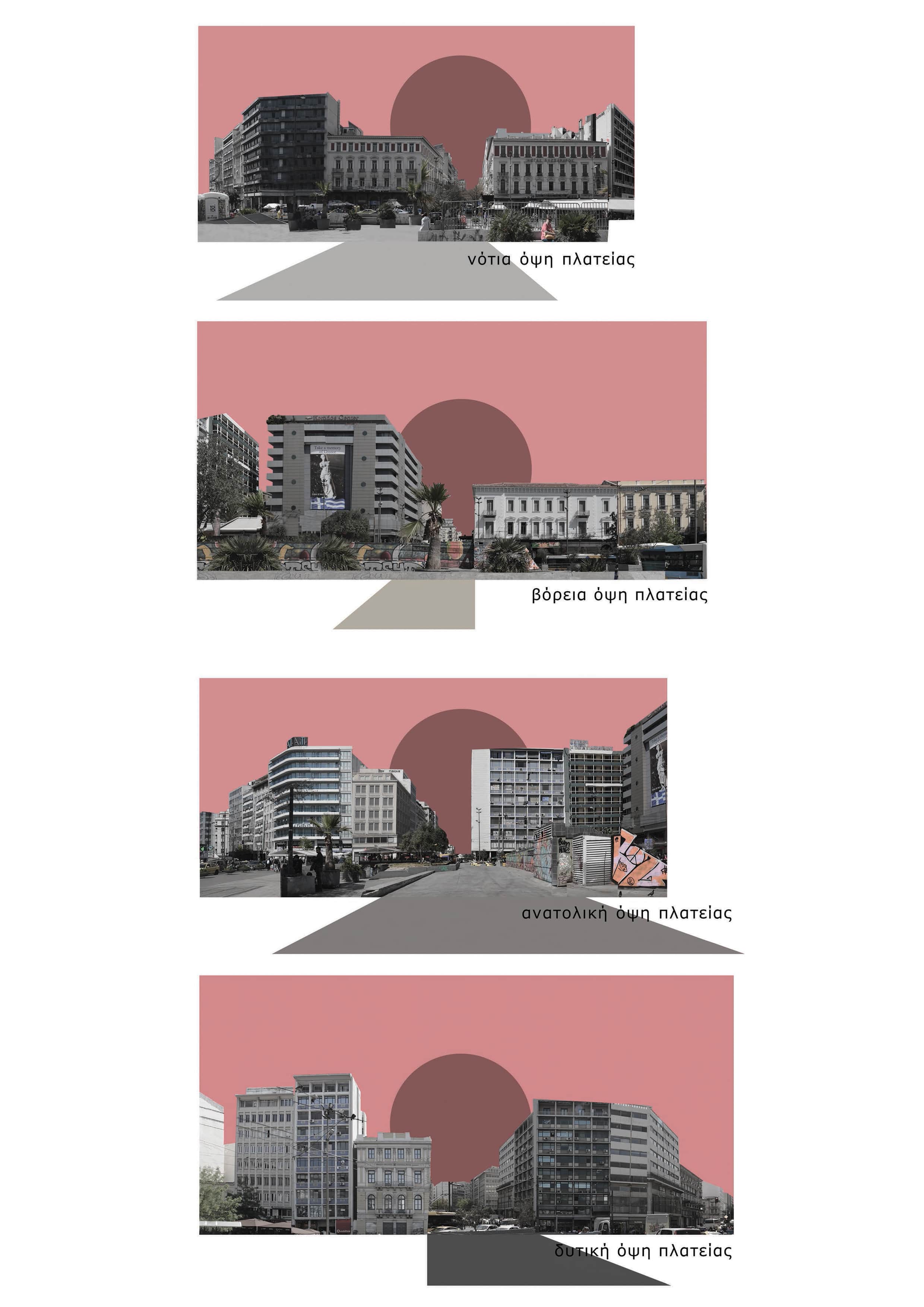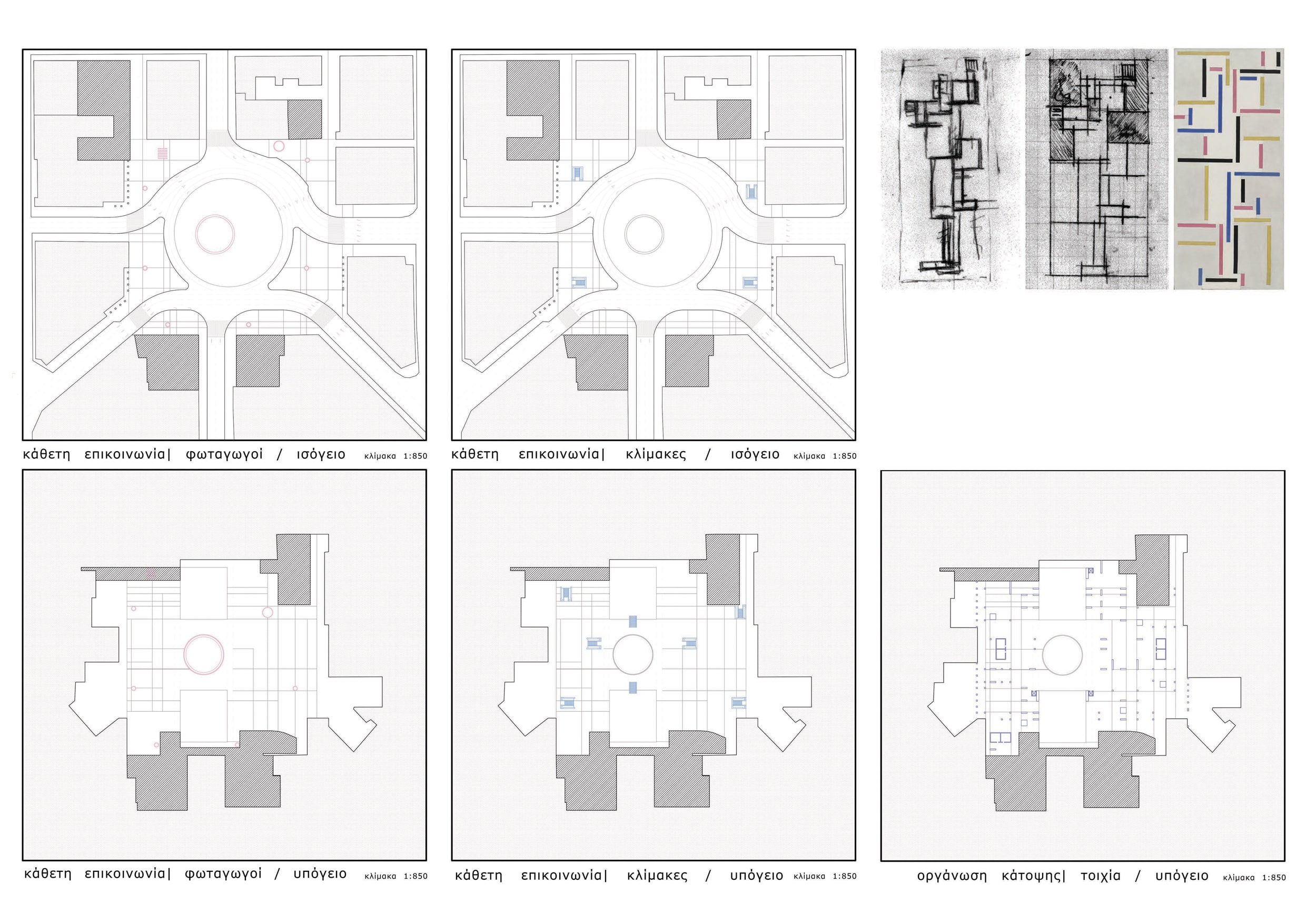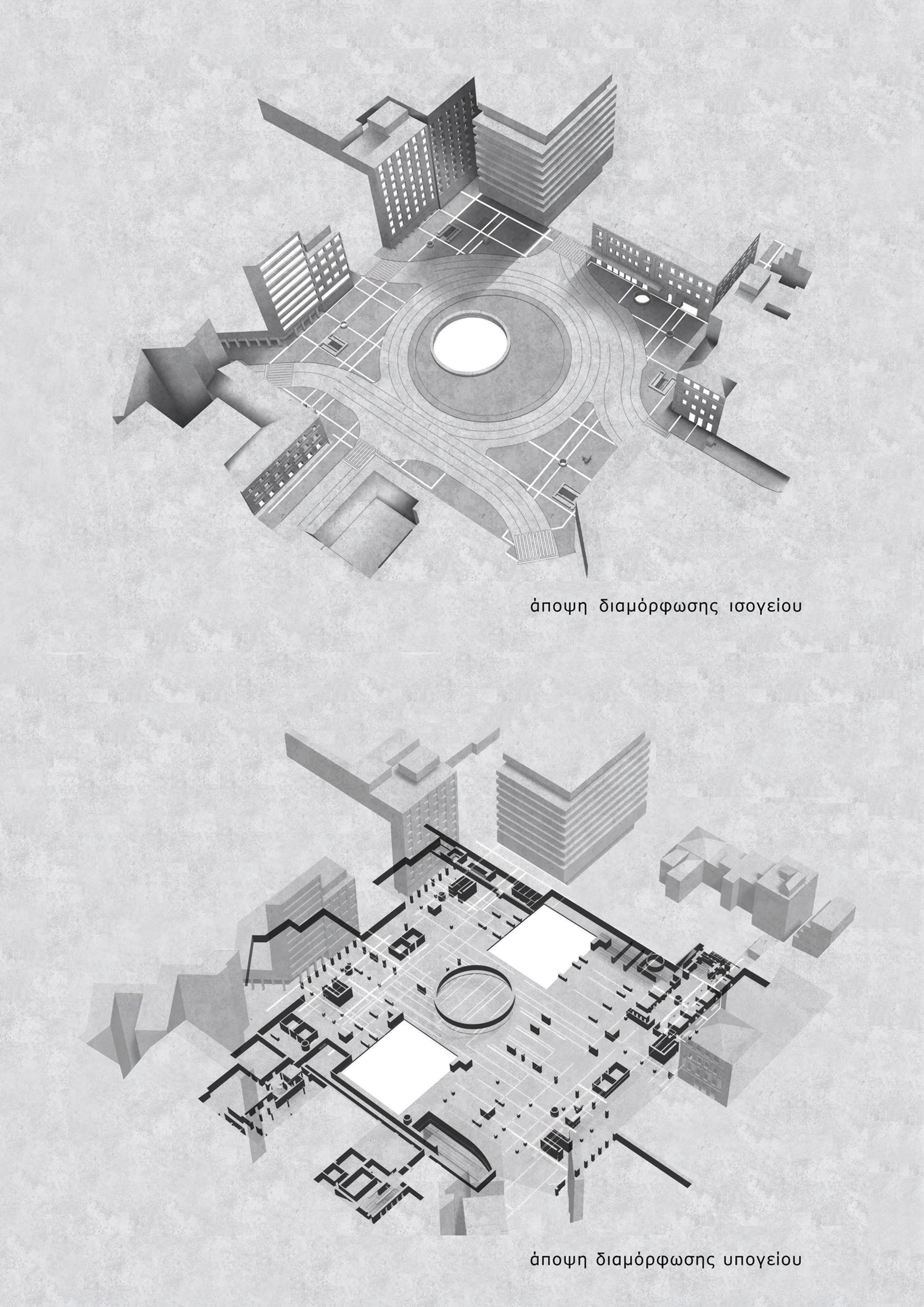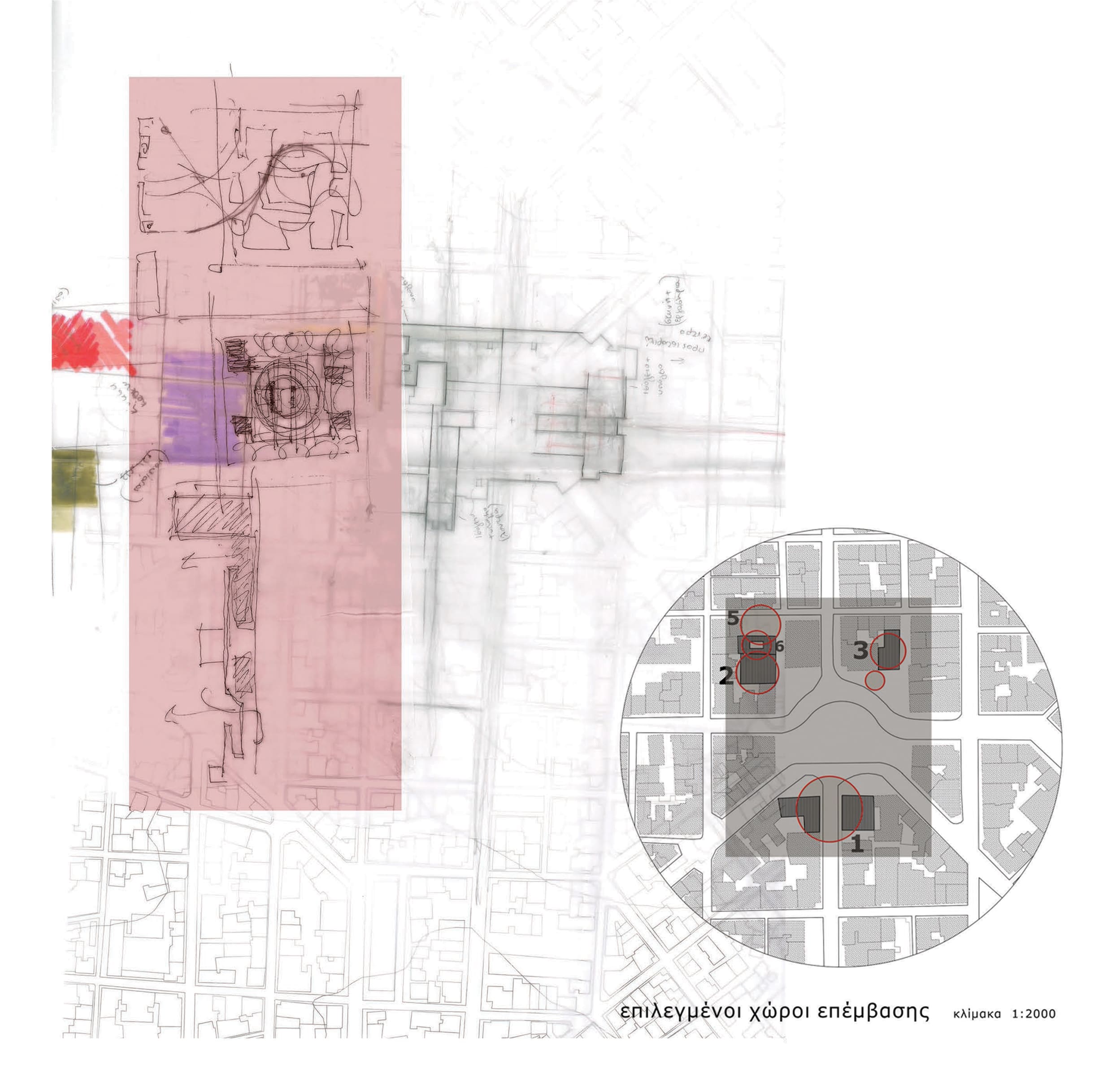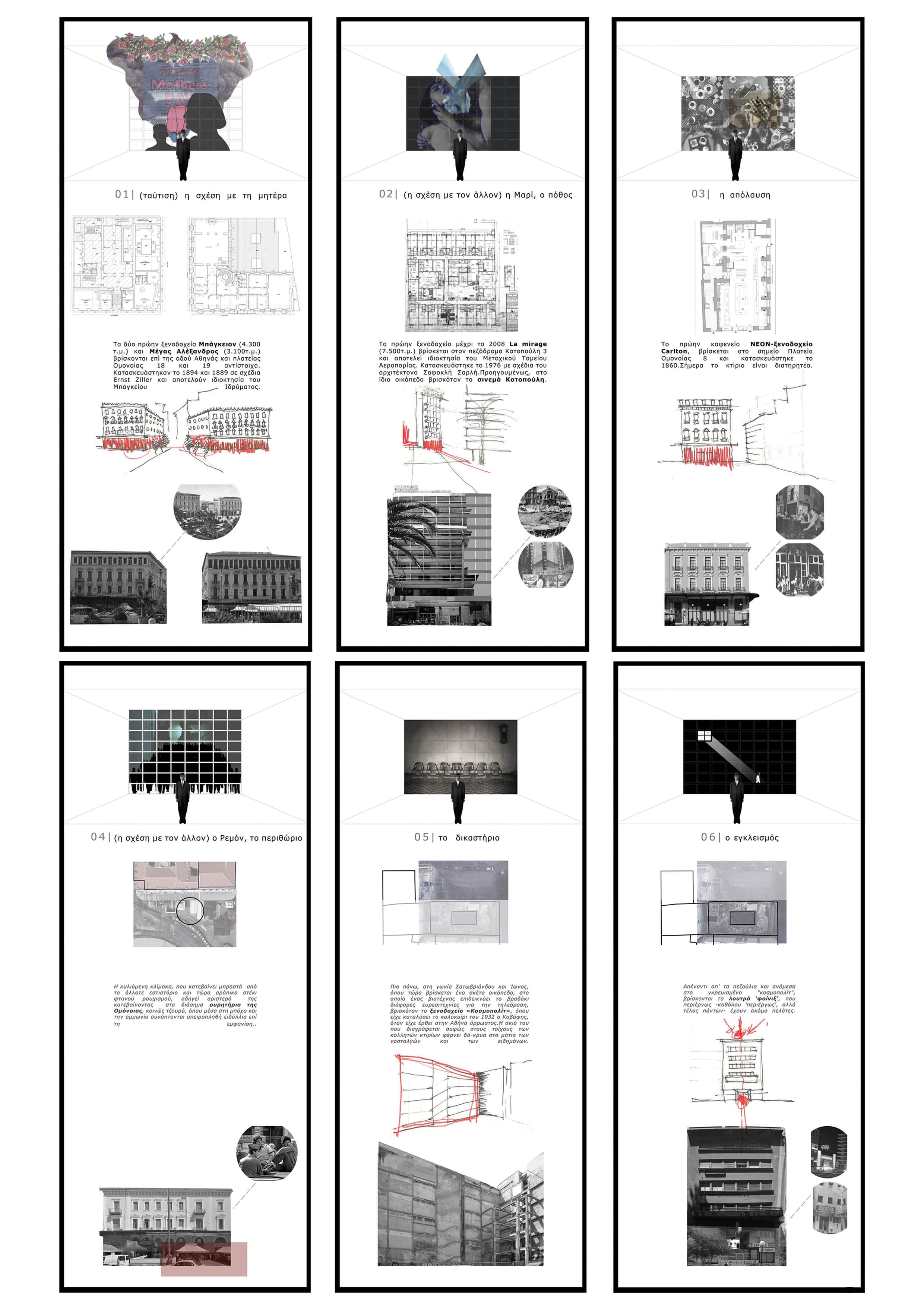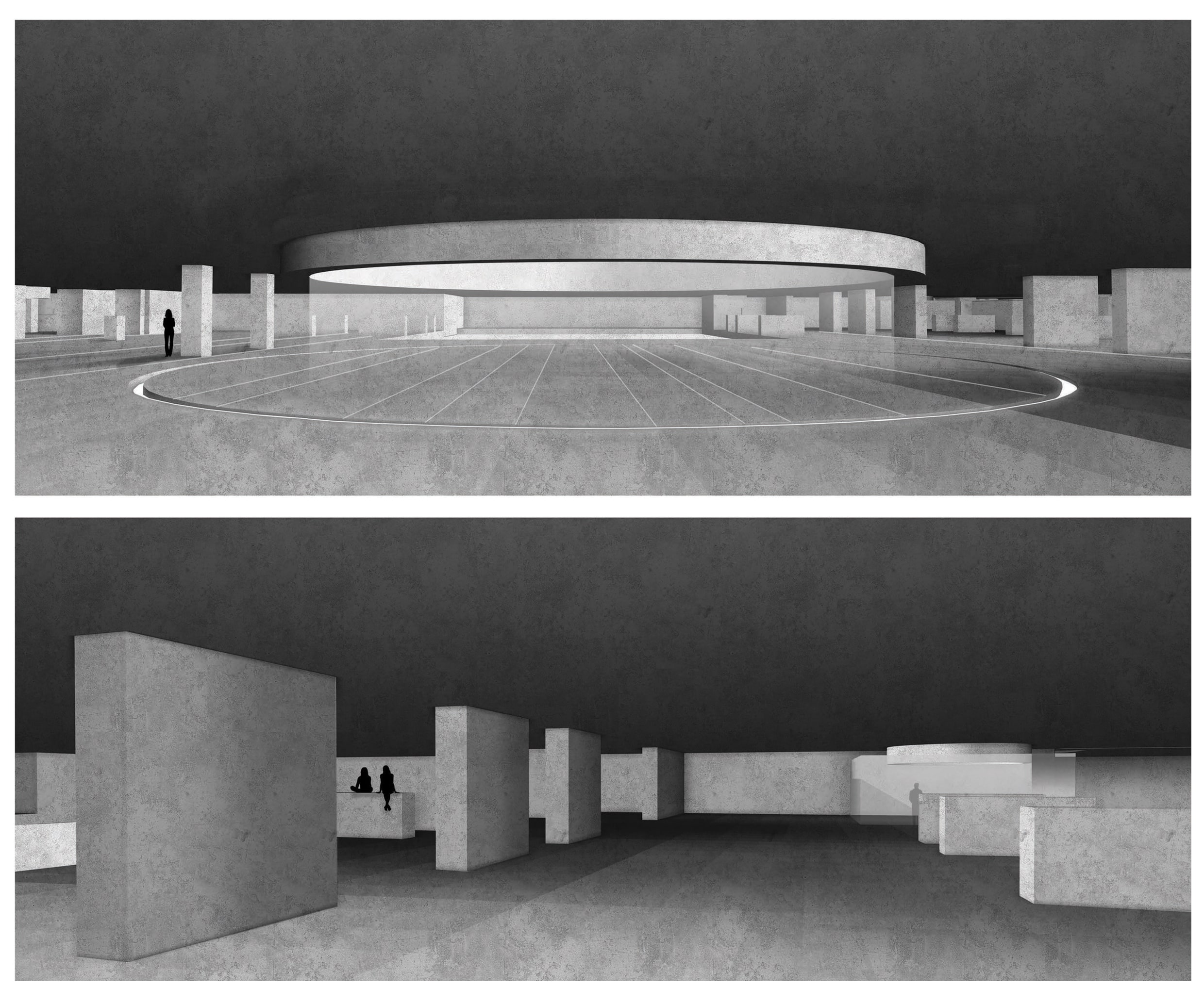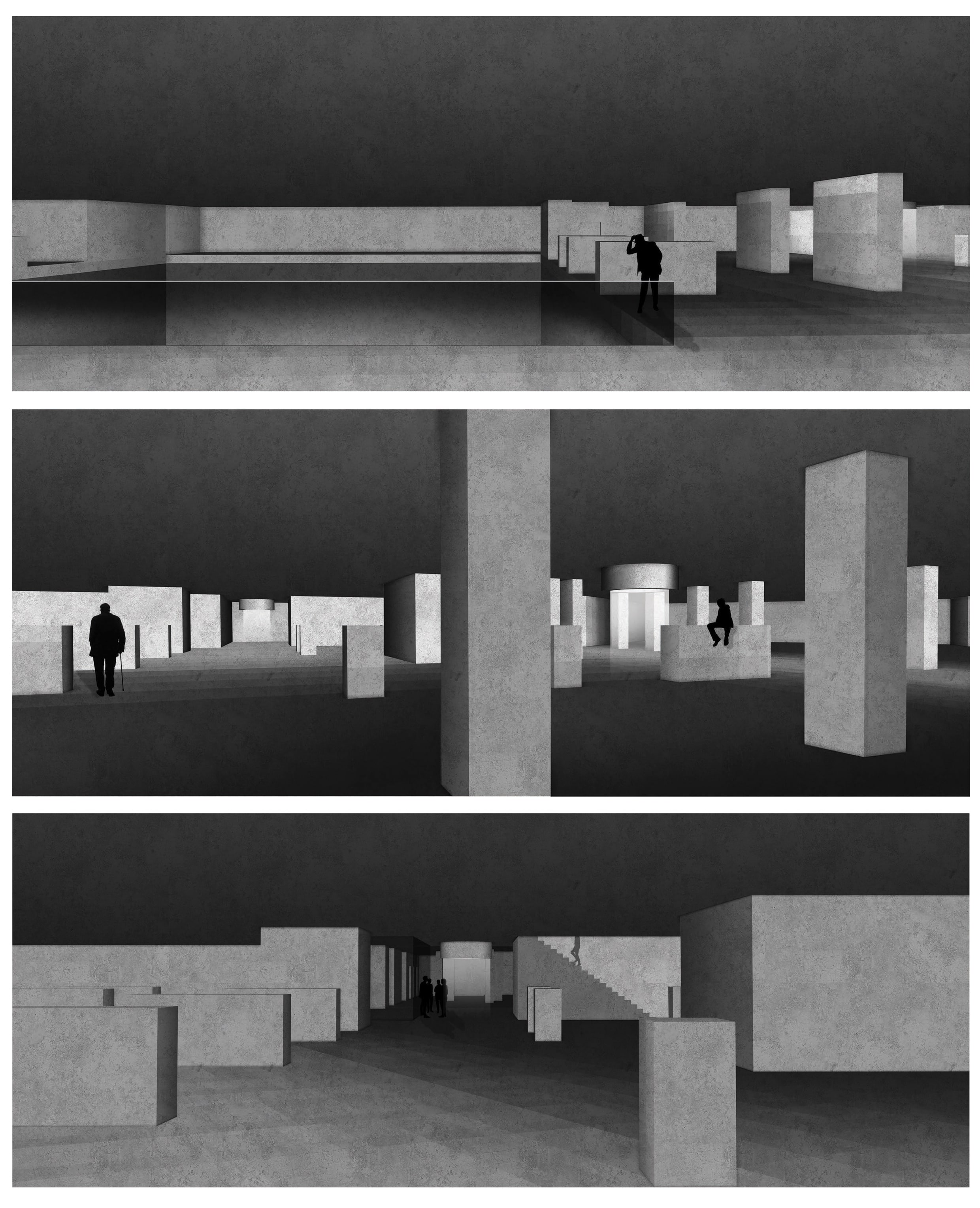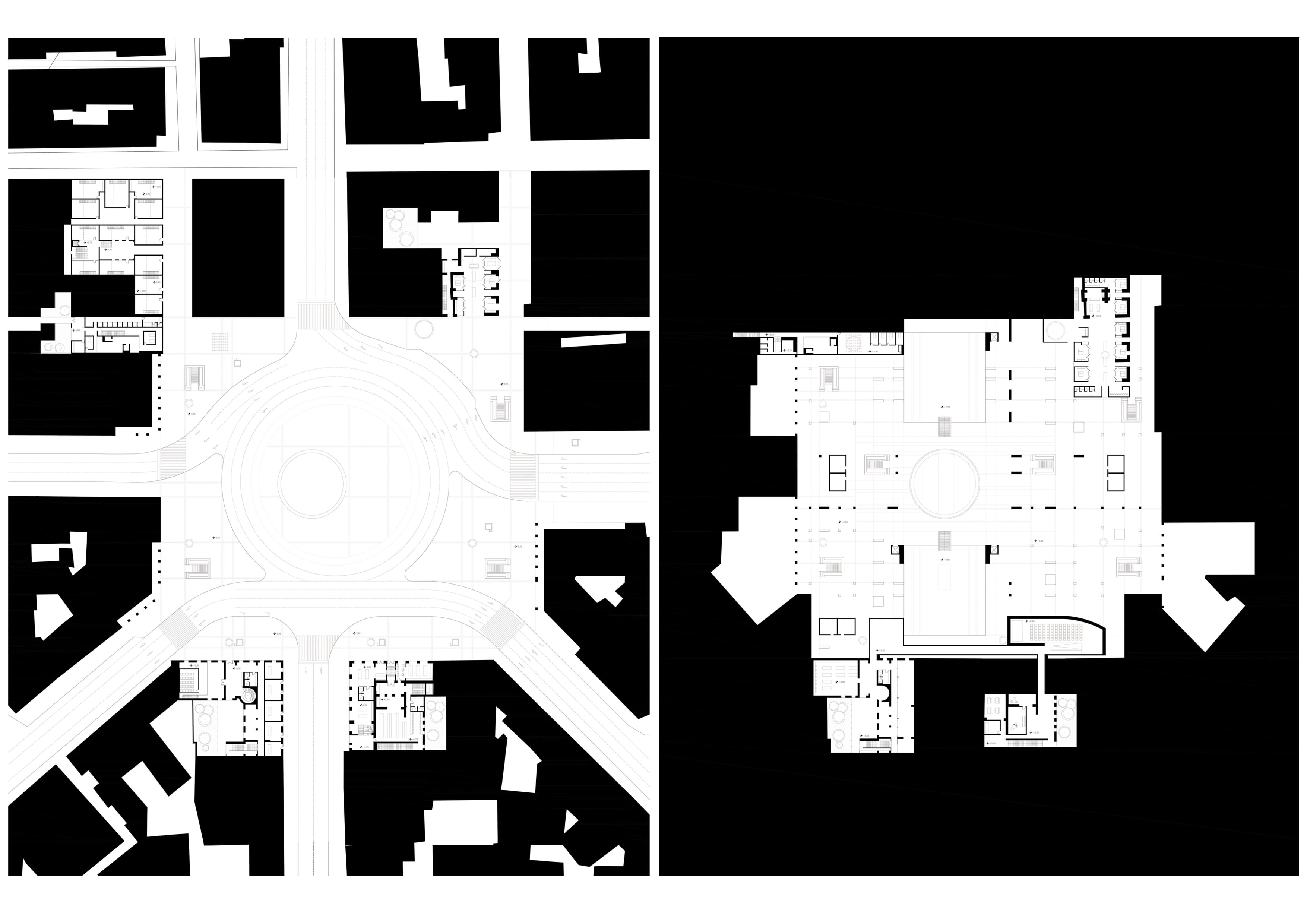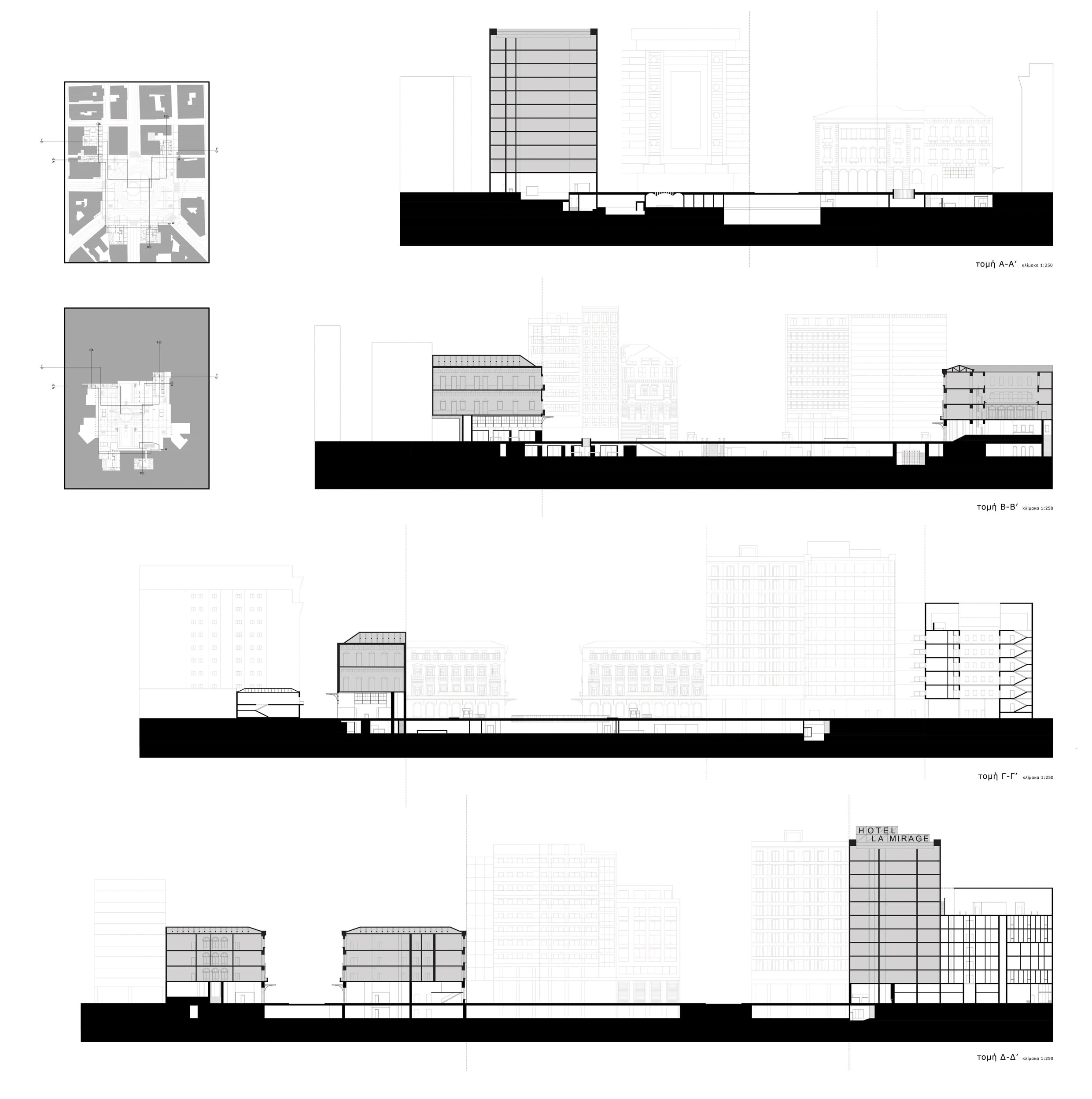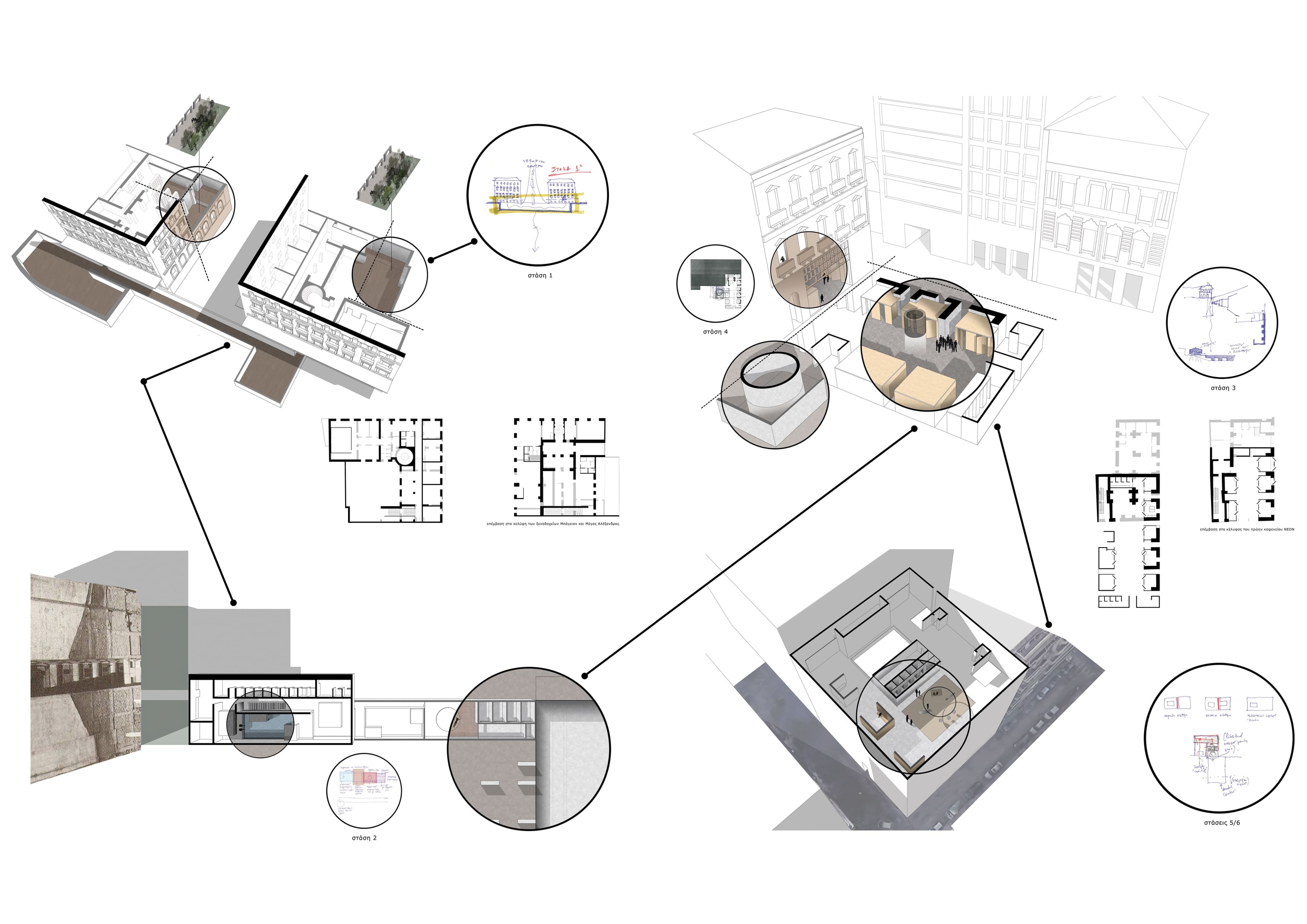This diploma thesis is an effort to translate a literary text, The Stranger, by Albert Camus, into an urban text.
The incorporation of a single individuality into a wide, partly constructed, system, governed by both institutionalized and unwritten rules, is treated through the plot of The Stranger as a difficult if not impossible process.
Initially, it is attempted to analyze the story, from which the basic concepts that make up the narrative course emerge. Focusing on the issues that affect the book, such as the alienation, the margin and the conflict between individual and society, we are starting to search for a suitable field for the application of this narrative.
We could, by some assumptions, identify the same rejection at the expense of some sub-regions, on the part of the rest of the urban fabric, and the extent of the conscience of its citizens.
If the metropolis tends to maintain or create a fictitious collective ego that will reflect the identity of its citizens, then areas that display a noisy diversity or somehow oppose this desirable image will be pressured to change, or finally will be marginalized.
For this reason, Omonia square, as well as the complex of the building blocks and the streets that surround it, constitutes the most suitable recipient to import a system that narrates this story.
If the center of Athens is perceived as an archipelago of neighborhoods/islands, the character of which is shaped by both the daily impressions of the crowd traveling among them as well as the strong footprint of the existing reference points, Omonia is the place that embodiesthe concept of negative freedom. It is an area where the individual field of action does not succumb to coercion.
Regarding its recent history, the people of the square, and especially its most frequent visitors, have been living a life deviating from what is considered normal and acceptable to society at any given time. The only means for this resistance , themselves.
Through a process of continuous transcription between the texts that constituted the theoretical axis of this project, most important of which Omonia 1980 , by Giorgos Ioannou, spatial relationships are produced that are depicted on a platform where architectural interventions are performed.
Elements of the region, such as the arcades, the traces of previous years, the abandonment of the existing building stock and the footprint of the social life that took place in the square, are transformed into tools for the synthesis of a new public space.
In this way, Omonoia square fulfills its role as narrator, repeating endlessly a story, which could be its own.


